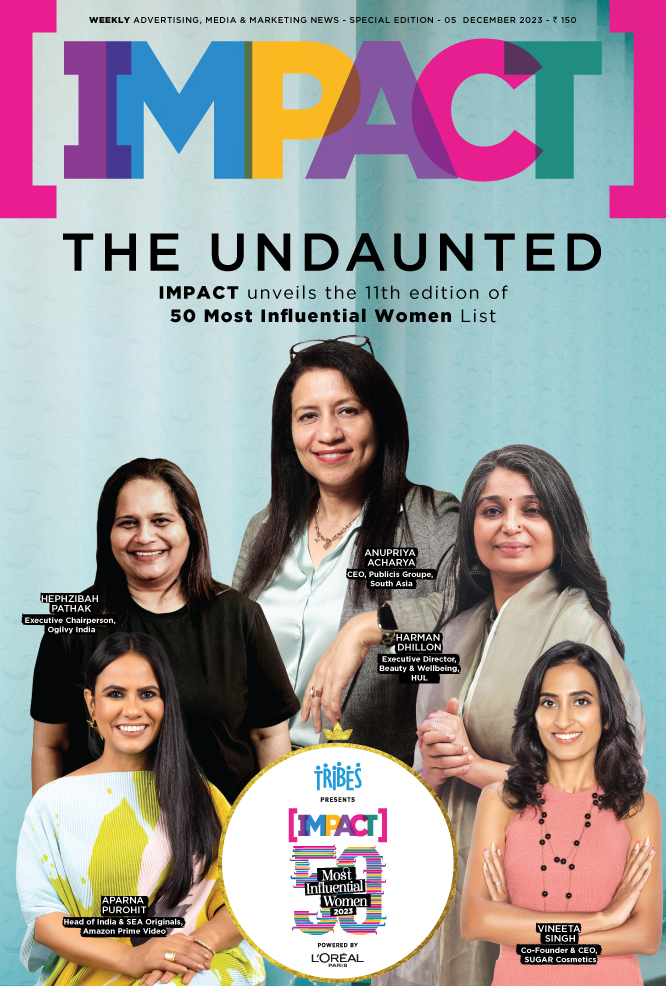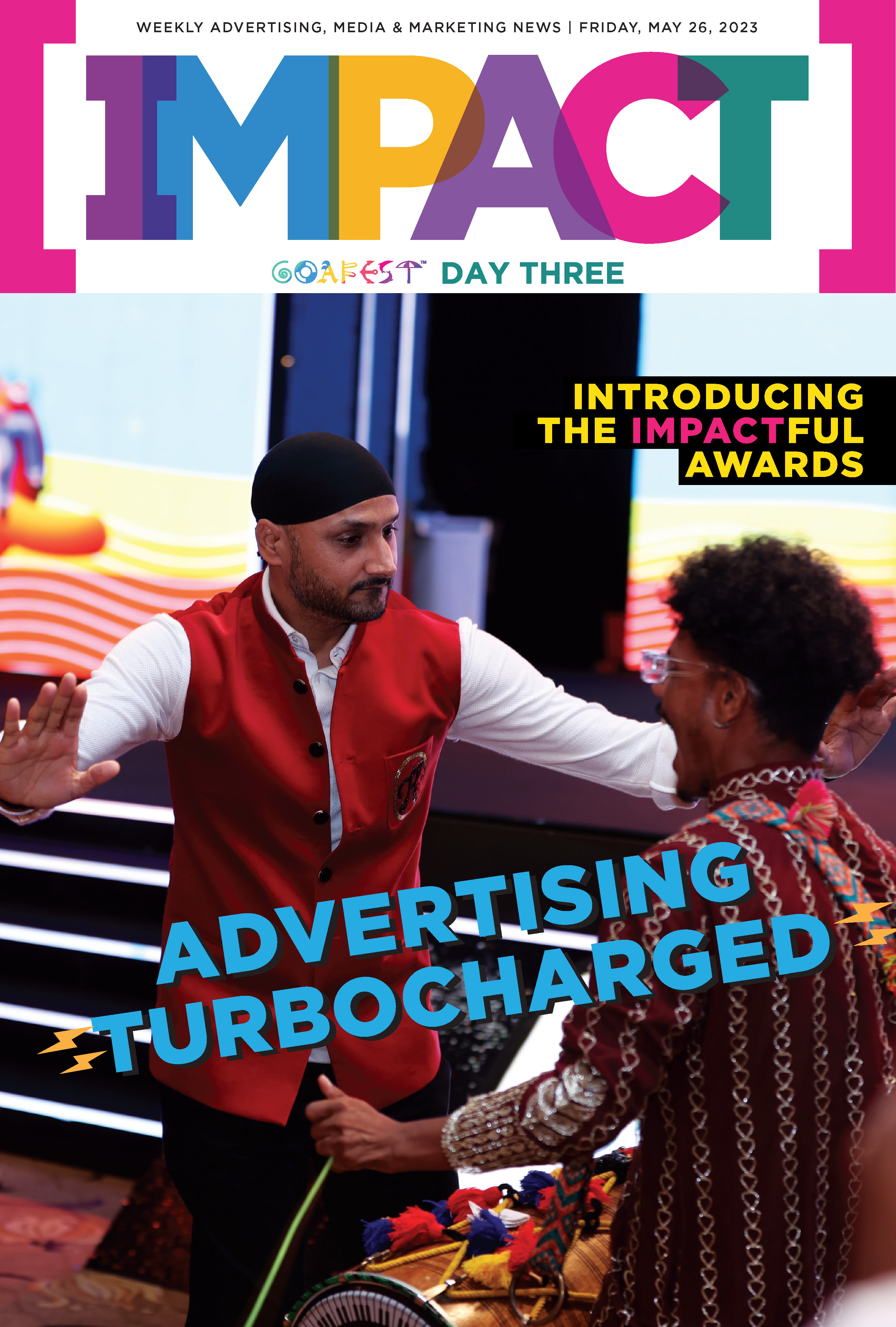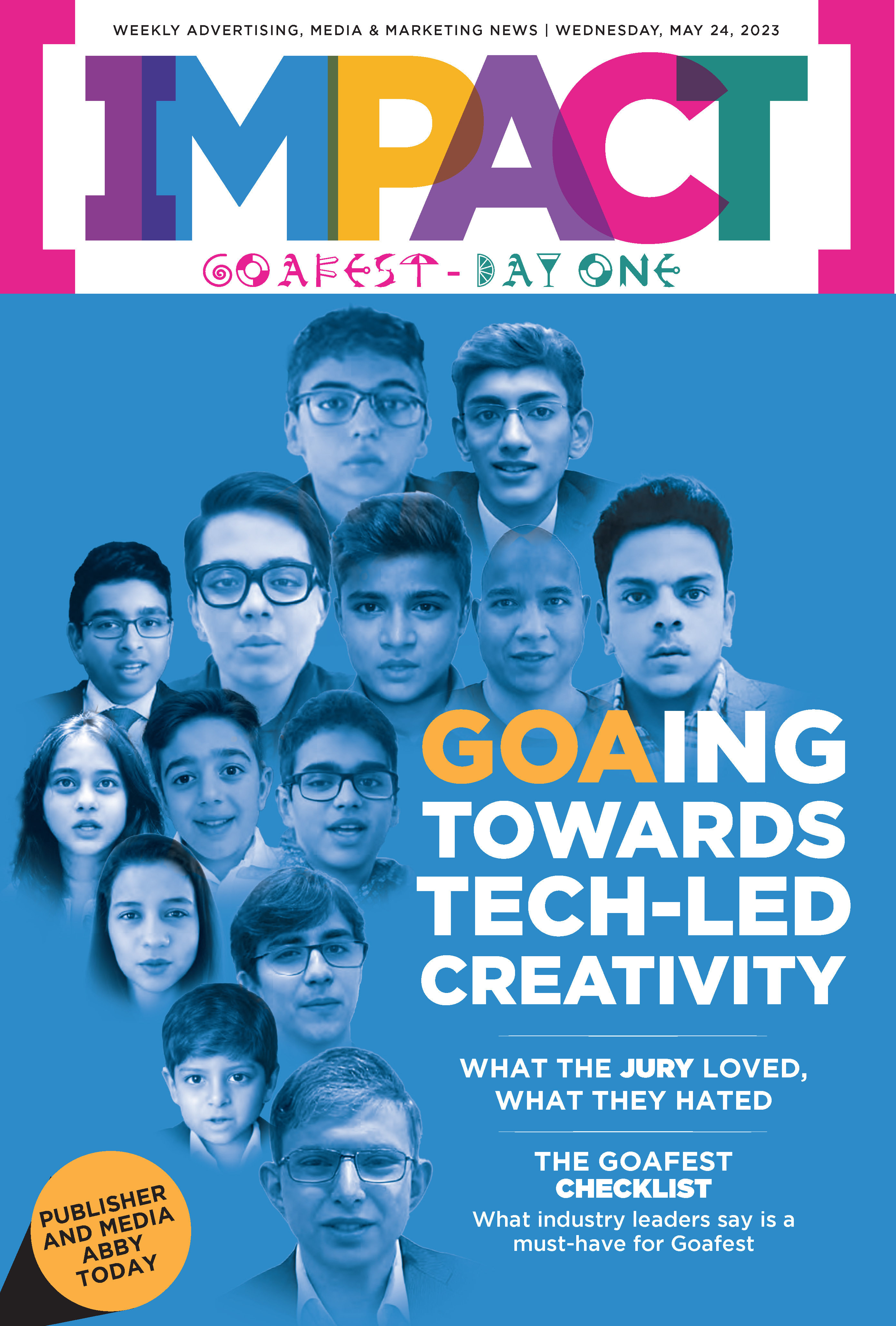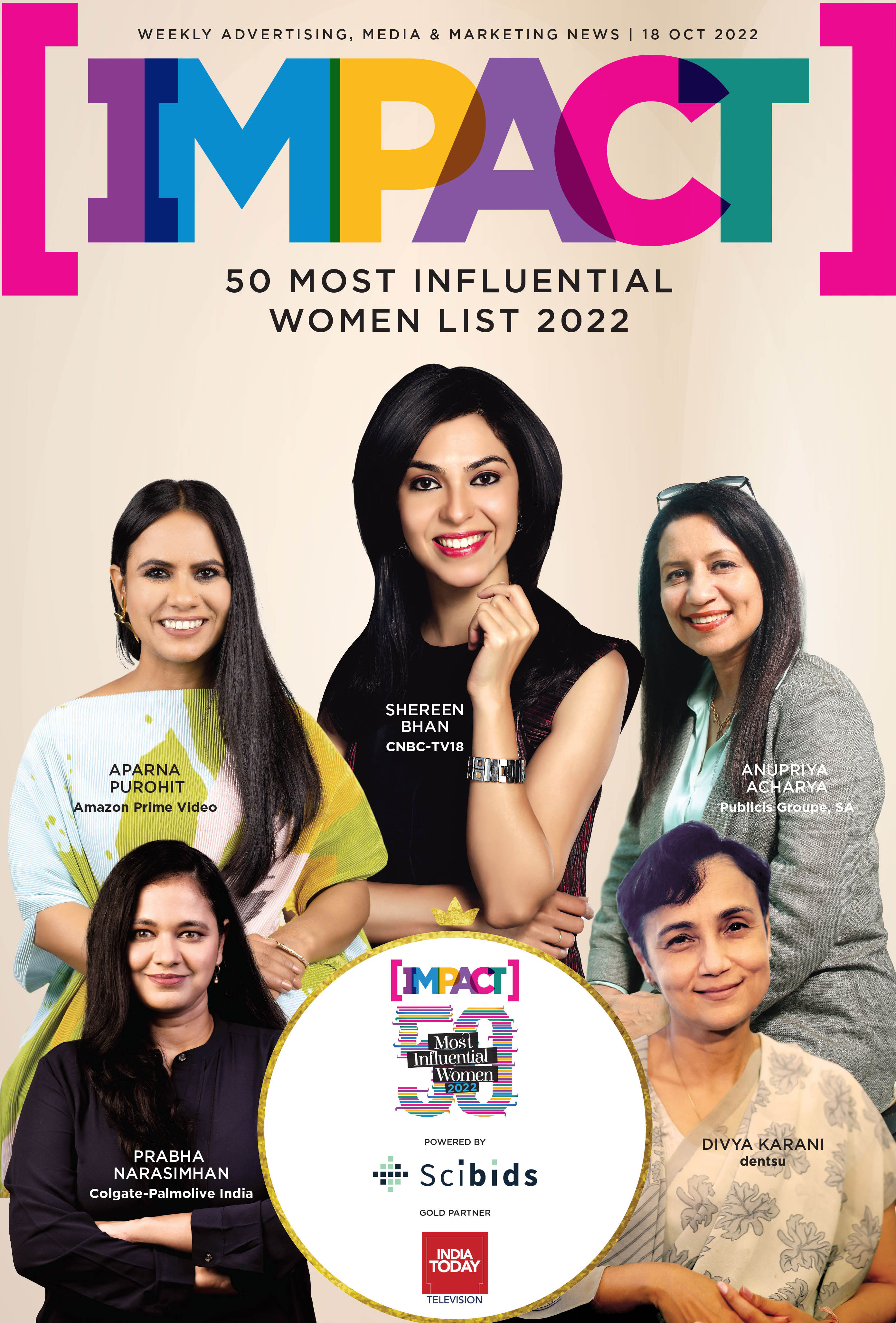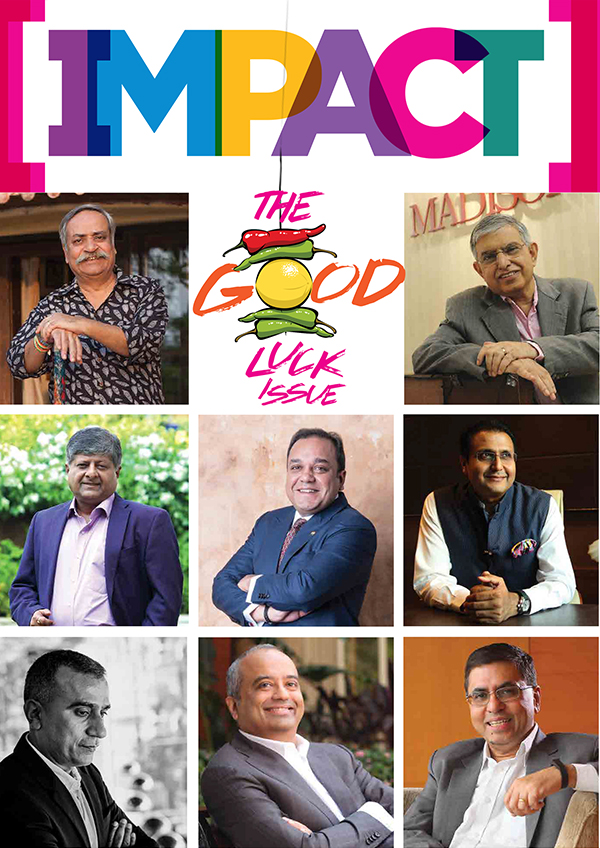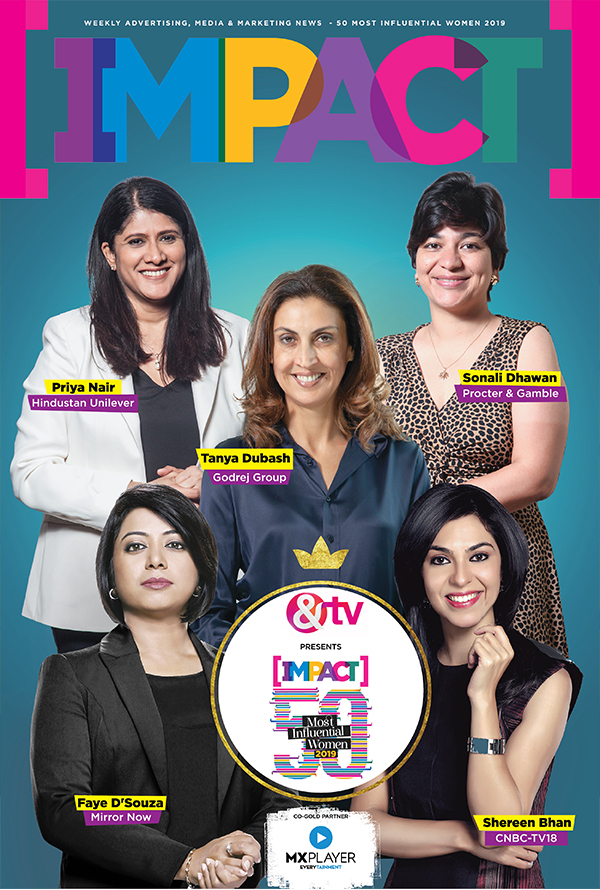When WPP, the world’s largest advertising empire, brought McKinsey & Company on board for a full-scale strategic review, it sent shockwaves across the global advertising industry. This wasn’t just another restructuring exercise - it appeared to be a veiled admission that the old holding-company model is under serious pressure.
Led by newly appointed CEO Cindy Rose, the review aims to simplify operations, integrate AI and technology solutions for clients, enhance execution, and enforce stricter financial discipline. But industry observers say the more important signal is what the review reveals about the market itself: brands are shifting spend, expectations, and decision-making away from traditional networks.
Because McKinsey is not cheap. The consultancy’s contract with WPP is rumoured to be worth £5 million (around $6.2 million). Global brand strategist Gustaf Wick captured the sentiment in a LinkedIn post that went viral:

“In six months, McKinsey will charge WPP more than most agencies make from their biggest clients in an entire year, and WPP will pay without flinching. Why?” He answered his own question sharply: “McKinsey bills itself as a growth consultancy. They tackle £100m (approx $131.4 million) problems and charge £5m. The math works.” And then came the punchline that resonated deeply with frustrated agency leaders worldwide: “Meanwhile, WPP’s own clients nickel-and-dime them on every brief, RFP them into exhaustion, and demand 47 rounds of revisions on a microsite that might see eight visitors.”
The contrast was painful. Networks that once commanded respect are now underpriced, overworked, and systematically commoditised. Consultants, meanwhile, operate in a realm where value, not volume, drives price. It is this tension, between agency value perception and consultancy value capture, that frames the true importance of the WPP–McKinsey partnership.

A Network Model Under Pressure
Across the global advertising industry, the WPP–McKinsey partnership has become more than a corporate engagement; it has become shorthand for a system under strain. For decades, holding companies thrived on a model built around scale: scale in creative, scale in media buying, scale in geography, scale in production. But scale, once the moat, could now be an obstruction. In an ecosystem where communication has splintered across dozens of platforms and hundreds of formats, the legacy architecture feels heavy, slow, and expensive.
The financial results of network agencies through 2025 only sharpen this impression. WPP recorded an 8.4% year-on-year decline in Q3 revenues, falling to £3,259 million (approx $4.28 billion USD). Dentsu posted a statutory net loss of ¥61.5 billion (approx $395.5 million USD), in Q3 2025, even as it improved its underlying operating profit to ¥111 billion (approx $714 million USD), showing a 14.1% year-on-year increase.
IPG saw revenues drop to $2.49 billion in Q3, a decline of around 5% year-on-year, even as it reported a sharp increase in profitability after eliminating roughly 800 jobs during the quarter, bringing total workforce reductions to about 3,200 roles year-to-date. Omnicom’s merger with IPG (reported to be completed by the end of this year) has been accompanied by a slip in net income, with Q3 figures dropping to $341.3 million, down 11.6% from $385.9 million last year, even though its Q3 revenue rose to $4.04 billion with 2.6% organic growth. Only Publicis has managed to push margins in a positive direction, with its Q3 net revenue climbing to €3,529 million (approx $4,093 million USD), up from €3,423 million (approx $3,969 million USD) in Q3 2024, reflecting 5.7% organic growth. However, besides this growth, by and large, this is a sector that is losing market share as the centre of gravity shifts away from the old agency model.
These numbers are not short-term turbulence. They represent something fundamental, a long, slow unraveling of the model that held global advertising together for half a century. The WPP review, and the fee they were willing to pay for it, is a tacit admission that the model that once shaped the industry’s power dynamics is no longer aligned with where marketing
is going.

Tech Giants Entering the Frame
As traditional network agencies face mounting challenges in sustaining business, India’s technology giants are well-positioned to step into the arena. India’s biggest technology companies - TCS, Infosys, Tech Mahindra and more, have quietly built formidable capabilities in marketing transformation and digital experience. And they are doing it in a way that challenges the very definition of what a ‘creative partner’ looks like.
TCS Interactive, the company’s digital design and marketing arm, now works with global clients on experience design, martech, and AI-driven customer journeys. Its acquisition of US-based ListEngage, a Salesforce partner specialising in marketing automation and AI advisory, was not a one-off; it was a signal of intent. Infosys, too, has made its position clear with Aster, its AI-powered marketing suite that aims to deliver hyper-personalised content and campaign acceleration at enterprise scale. Balaji Sampath, Executive Vice President and Segment Head, Marketing, Infosys, emphasizes that today’s marketing requires more than incremental improvements. “Our goal is to enable businesses to deliver hyper-personalised content at scale, accelerate campaign launches, and maximise ROI while reducing time and cost,” he says. By positioning itself at the intersection of engineering, data, and creativity, Infosys is trying to occupy ground that agencies once considered exclusively theirs.
Balaji Sampath, Executive Vice President and Segment Head, Marketing, Infosys, emphasizes that today’s marketing requires more than incremental improvements. “Our goal is to enable businesses to deliver hyper-personalised content at scale, accelerate campaign launches, and maximise ROI while reducing time and cost,” he says. By positioning itself at the intersection of engineering, data, and creativity, Infosys is trying to occupy ground that agencies once considered exclusively theirs.
Jio’s ambitions are even broader. Through JioAds GoLocal, Jio Screenz, and Jio Creative Labs, the company is building a vertically integrated ecosystem that stretches from telco data to content platforms to retail and commerce.
For brands, the proposition is irresistible: a single entity that owns distribution, data, and creative service. It is a level of vertical integration that network agencies cannot replicate, at least not without fundamentally restructuring themselves.

 Rohit Ohri, Founder, Ohriginal, believes this shift reflects a deeper reordering of the industry itself. “What was once the domain of agency networks is now being reshaped by a far more complex and competitive set of players,” he says. “Consultancies, tech platforms, creator networks, and even brands that have built in-house capabilities have expanded the offering that clients now expect.”
Rohit Ohri, Founder, Ohriginal, believes this shift reflects a deeper reordering of the industry itself. “What was once the domain of agency networks is now being reshaped by a far more complex and competitive set of players,” he says. “Consultancies, tech platforms, creator networks, and even brands that have built in-house capabilities have expanded the offering that clients now expect.”
He argues that consultancies bring strengths in business strategy, data, martech, and sales, while tech firms bring speed and infrastructure. But what they lack, he says, is emotional storytelling and cultural resonance. “The future of advertising won’t be defined by agencies or consultancies, but by those who make creativity the true engine of business growth.”

Consultancies Redefining the Playing Field
If tech giants attack from the engineering side, consultancies attack from the boardroom. Karishma Gupta, Partner, Deloitte India, says advertising in India is being reshaped at a pace that has never been seen before. She says storytelling and precision targeting go hand in hand, while influencers, regional voices, and hyper-personalisation add new layers of relevance. She notes that storytelling is no longer enough precision, personalisation, and measurable business impact have become non-negotiable. “The network agencies continue to hold an edge in brand storytelling, but the advantage lies in how it is creatively paired with AI and delivered with agility,” she adds.
Karishma Gupta, Partner, Deloitte India, says advertising in India is being reshaped at a pace that has never been seen before. She says storytelling and precision targeting go hand in hand, while influencers, regional voices, and hyper-personalisation add new layers of relevance. She notes that storytelling is no longer enough precision, personalisation, and measurable business impact have become non-negotiable. “The network agencies continue to hold an edge in brand storytelling, but the advantage lies in how it is creatively paired with AI and delivered with agility,” she adds.
Accenture Song is the most visible example of what happens when consultancies decide to enter advertising with intent. Its acquisition spree, Droga5, The Monkeys, Karmarama, Maud, Rothco, Mackevision, was not about creative trophies but about creating a globally scalable creative-tech organisation. Today, Accenture Song, with its $20 billion revenue in FY25, has become one of the biggest advertising networks in the world.

Network Agencies Push Back
Despite the pressure, network agencies argue that the core value they offer remains irreplaceable. Advertising, they say, is ultimately about human insight - understanding what moves people, what shapes culture, what builds memory. It is about living close to the pulse of consumers, not just the dashboards. While we reached out to all the network agencies, Harsha Razdan, CEO, South Asia, Dentsu, spoke to IMPACT and stressed that agencies thrive on execution. “We deal with people, we execute ideas. From ideation to delivery, the process is messy, and that’s exactly where we excel. You roll up your sleeves, get your hands dirty, and make it happen. This isn’t what a consultant or tech firm is built to do.”
While we reached out to all the network agencies, Harsha Razdan, CEO, South Asia, Dentsu, spoke to IMPACT and stressed that agencies thrive on execution. “We deal with people, we execute ideas. From ideation to delivery, the process is messy, and that’s exactly where we excel. You roll up your sleeves, get your hands dirty, and make it happen. This isn’t what a consultant or tech firm is built to do.”
Dentsu’s recent initiatives—including Dentsu Bharat, Dentsu Lab India, and the Dentsu Podcast Network—reflect its attempt to build a modern, hybrid identity that blends consultancy-like discipline with agency creativity. Anand Chakravarthy, Chief Growth Officer, Omnicom Media Group India, rejects the idea that agencies are falling behind. “What sets agencies apart is the ability to combine decades of brand and category intelligence with significant investments in AI, automation, and media tech.” He emphasises neutrality, unlike walled-garden platforms, along with long-standing relationships that are built on trust rather than transaction.
Anand Chakravarthy, Chief Growth Officer, Omnicom Media Group India, rejects the idea that agencies are falling behind. “What sets agencies apart is the ability to combine decades of brand and category intelligence with significant investments in AI, automation, and media tech.” He emphasises neutrality, unlike walled-garden platforms, along with long-standing relationships that are built on trust rather than transaction.
WPP, too, is positioning itself as a creative-tech hybrid. Tushar Vyas, Chief Strategy Officer, WPP India, says the network’s enduring strength is being consumer-first. “While consultancies optimise processes and tech firms build platforms, our strength is in harnessing creativity and technology to build enduring brands that resonate culturally.” WPP’s proprietary platforms, WPP Open and Choreograph, are central to this pitch - tools designed to make creativity faster, more collaborative, and more data-empowered.

 Sudhir Nair, Founder and CEO of 21N78E, echoes this sentiment but warns that the competitive field has never been more crowded. “Consulting firms are no longer content with boardroom charts. They are hiring creative leaders, setting up agency-like divisions, and pitching campaigns,” he says. “Similarly, tech firms are not just building platforms; they are offering creative and content services bundled into the product.” For Nair, each player brings complementary strengths: consultancies bring rigor, tech firms bring speed and infrastructure, and agencies bring cultural instinct and narrative craft. “Agencies once owned the deepest consumer insights but undersold them as just ‘making ads.’ Consultancies called it transformation, tech baked it into platforms,” he adds. He believes the future will be shaped not by rivalry, but by how well these capabilities ultimately converge.
Sudhir Nair, Founder and CEO of 21N78E, echoes this sentiment but warns that the competitive field has never been more crowded. “Consulting firms are no longer content with boardroom charts. They are hiring creative leaders, setting up agency-like divisions, and pitching campaigns,” he says. “Similarly, tech firms are not just building platforms; they are offering creative and content services bundled into the product.” For Nair, each player brings complementary strengths: consultancies bring rigor, tech firms bring speed and infrastructure, and agencies bring cultural instinct and narrative craft. “Agencies once owned the deepest consumer insights but undersold them as just ‘making ads.’ Consultancies called it transformation, tech baked it into platforms,” he adds. He believes the future will be shaped not by rivalry, but by how well these capabilities ultimately converge.

 The Rise of In-House Agencies
The Rise of In-House Agencies
As the battle among networks, tech firms, and consultancies intensifies, a quieter but equally transformative shift is happening inside brands themselves. More companies are pulling creative, performance, content, and even media functions in-house. This trend is no longer limited to global giants; Indian brands across FMCG, retail, tech, BFSI, and consumer electronics are increasingly building creative and strategic capabilities internally.
When Godrej launched its in-house creative agency, Lightbox, in April 2023, it marked more than just an organisational experiment. With nearly `1,000 crore in annual advertising spend worldwide, the move represented a significant reallocation of work away from partners. It also reflected a deeper sentiment emerging across the market: brands want more ownership, more agility, and more control. Krishnarao Buddha, former senior category head, marketing at Parle, believes this shift is inevitable. “Large network agencies, by virtue of being so big, are not able to treat all clients equally. Small and mid-sized clients often feel ignored; in that case, independent agencies step in.” He argues that in-house teams give brands the power to prioritise their needs without competing for attention or bandwidth, which has become a common frustration with larger networks.
Krishnarao Buddha, former senior category head, marketing at Parle, believes this shift is inevitable. “Large network agencies, by virtue of being so big, are not able to treat all clients equally. Small and mid-sized clients often feel ignored; in that case, independent agencies step in.” He argues that in-house teams give brands the power to prioritise their needs without competing for attention or bandwidth, which has become a common frustration with larger networks.
However, Buddha also offers a cautionary note for tech giants tempted to expand deeply into advertising. He believes consultancies can only make such ventures work if they are housed as completely separate entities. “Your core business is your core,” he cautions. “You can’t dilute energy into what’s not core. Take Reliance, for example. They floated Mudra Max to capture all their business, but that didn’t happen. That’s the danger when companies mix core business with advertising.”
This sentiment is echoed by industry veteran Jessie Paul, former CMO of Wipro Technologies and former global brand manager, Infosys. According to her, tech firms do not need to acquire agencies to build creative capacity. “The era of buying agencies for their large creative or production teams is over. If IT firms want talent, they can simply hire top creatives when agencies downsize. Why buy the whole agency?” she asks. Paul believes the DNA of technology companies does not align with the fragmentary and hyper-local nature of modern advertising. “IT thrives on scale, while advertising today is about creating a three-second Instagram hook. That model doesn’t align with how IT companies operate,” she explains. Nikhil Kant, former global social media head at Uber and now marketing lead at FlixBus, reinforces the scale of the shift. “Take performance marketing, for example: most companies now manage it in-house. At Uber, we did it ourselves; at FlixBus, we do the same,” he says. “Agencies are losing relevance because brands today want ownership and agility.”
Nikhil Kant, former global social media head at Uber and now marketing lead at FlixBus, reinforces the scale of the shift. “Take performance marketing, for example: most companies now manage it in-house. At Uber, we did it ourselves; at FlixBus, we do the same,” he says. “Agencies are losing relevance because brands today want ownership and agility.”
He also points out that media agencies’ biggest advantage is eroding. “The only real edge media agencies still have is bulk rates - but even that advantage will soon get commoditised.” According to him, the disruption won’t come from tech giants or networks, but from “boutique independents and smaller creative units that offer sharper attention and fresher ideas.”
What Brands Want Nikhil Gupta, Head of Marketing, Strategy, Government Affairs & CSR, Signify India, highlights a growing shift: tech firms and consultancies are rapidly encroaching on traditional agency turf. He warns that network agencies cannot afford to wait. “Unless agencies integrate technology — especially generative AI — they risk losing relevance,” he says. “Many digital agencies are adopting AI, but competing with tech-born firms requires making tech platforms a core offering. This evolution is inevitable.”
Nikhil Gupta, Head of Marketing, Strategy, Government Affairs & CSR, Signify India, highlights a growing shift: tech firms and consultancies are rapidly encroaching on traditional agency turf. He warns that network agencies cannot afford to wait. “Unless agencies integrate technology — especially generative AI — they risk losing relevance,” he says. “Many digital agencies are adopting AI, but competing with tech-born firms requires making tech platforms a core offering. This evolution is inevitable.”
For him, the future lies in hybridised partnerships. “No single player can cover it all. Brands will need an ecosystem where each partner brings unique strengths, from AI avatars to traditional media expertise,” Gupta says. Rashid Ali, Chief Marketing Officer, College Vidya says legacy channels sometimes lack the agility and transparency needed in today’s results-driven world. What truly matters is the quality of impact-and this is where traditional networks sometimes fall short. “There is a strong need for these networks to evolve, with more focus on data-backed clarity and accountable measurement,” he says.
Rashid Ali, Chief Marketing Officer, College Vidya says legacy channels sometimes lack the agility and transparency needed in today’s results-driven world. What truly matters is the quality of impact-and this is where traditional networks sometimes fall short. “There is a strong need for these networks to evolve, with more focus on data-backed clarity and accountable measurement,” he says. Aditya Potdar, Senior Brand & Marketing Manager, BN Group, agrees. “Traditional agencies deliver creativity and cultural insight; consultancies excel in strategy and linking marketing outcomes to business impact; tech firms provide personalisation, data-driven targeting, and automation,” he says. “The future isn’t about replacing one with another — it’s about orchestrating their capabilities effectively.”
Aditya Potdar, Senior Brand & Marketing Manager, BN Group, agrees. “Traditional agencies deliver creativity and cultural insight; consultancies excel in strategy and linking marketing outcomes to business impact; tech firms provide personalisation, data-driven targeting, and automation,” he says. “The future isn’t about replacing one with another — it’s about orchestrating their capabilities effectively.”
Potdar believes the next era of marketing belongs to those who can blend technology, creativity, and strategy seamlessly. “Technology will be the backbone, but technology without creativity lacks impact, and creativity without strategy lacks direction. Brands that combine all three will stand out.”
The global and local shifts present a unique opportunity for Indian players. With an established advertising market, deep creative talent, and growing technological capabilities, India could establish its own homegrown advertising networks capable of competing globally. The potential lies not just in scale but also in exporting creative and tech innovations worldwide. The next decade may define whether global network agencies retain dominance or whether Indian tech and creative firms rise to lead the industry both at home and abroad.


















